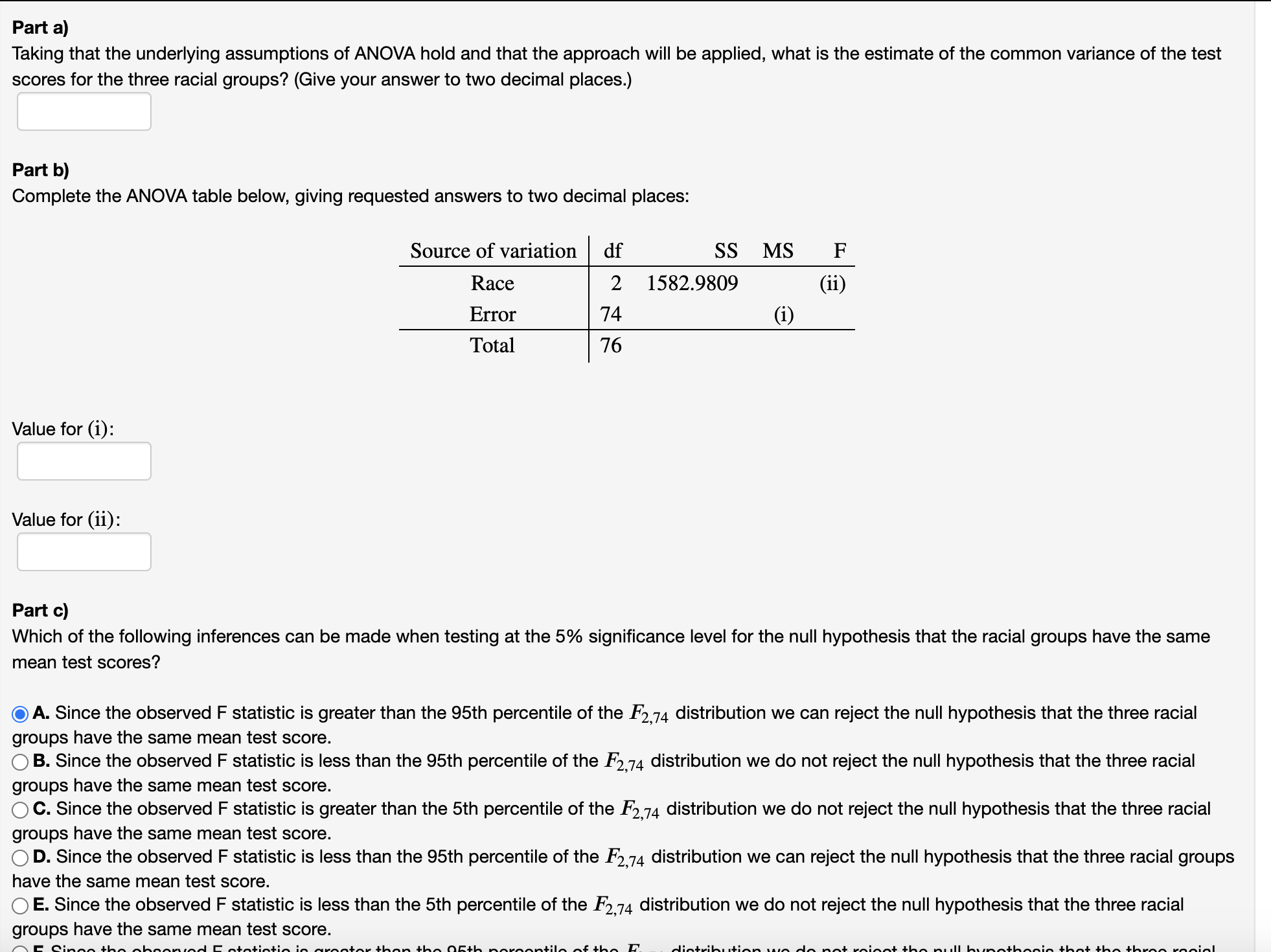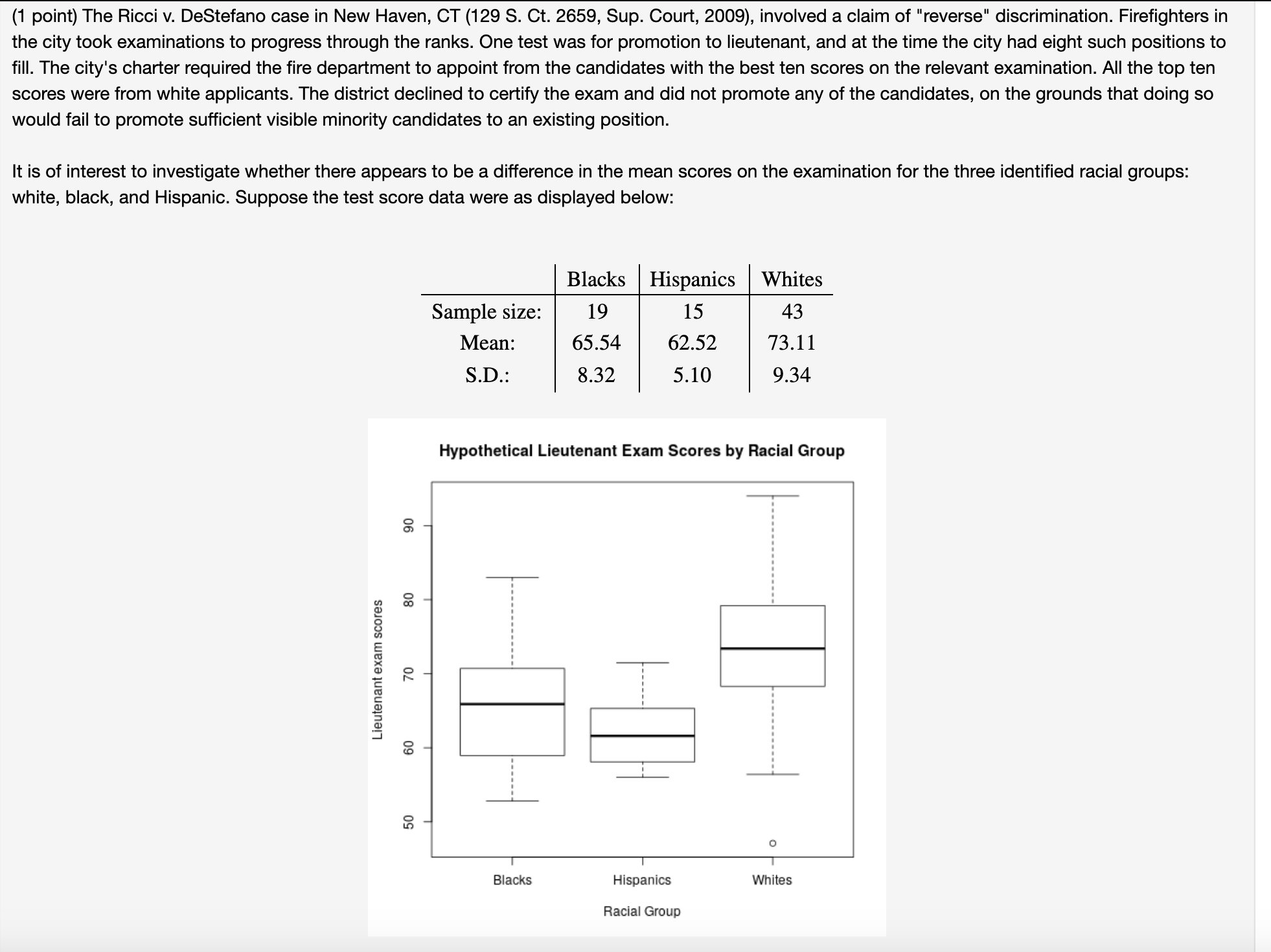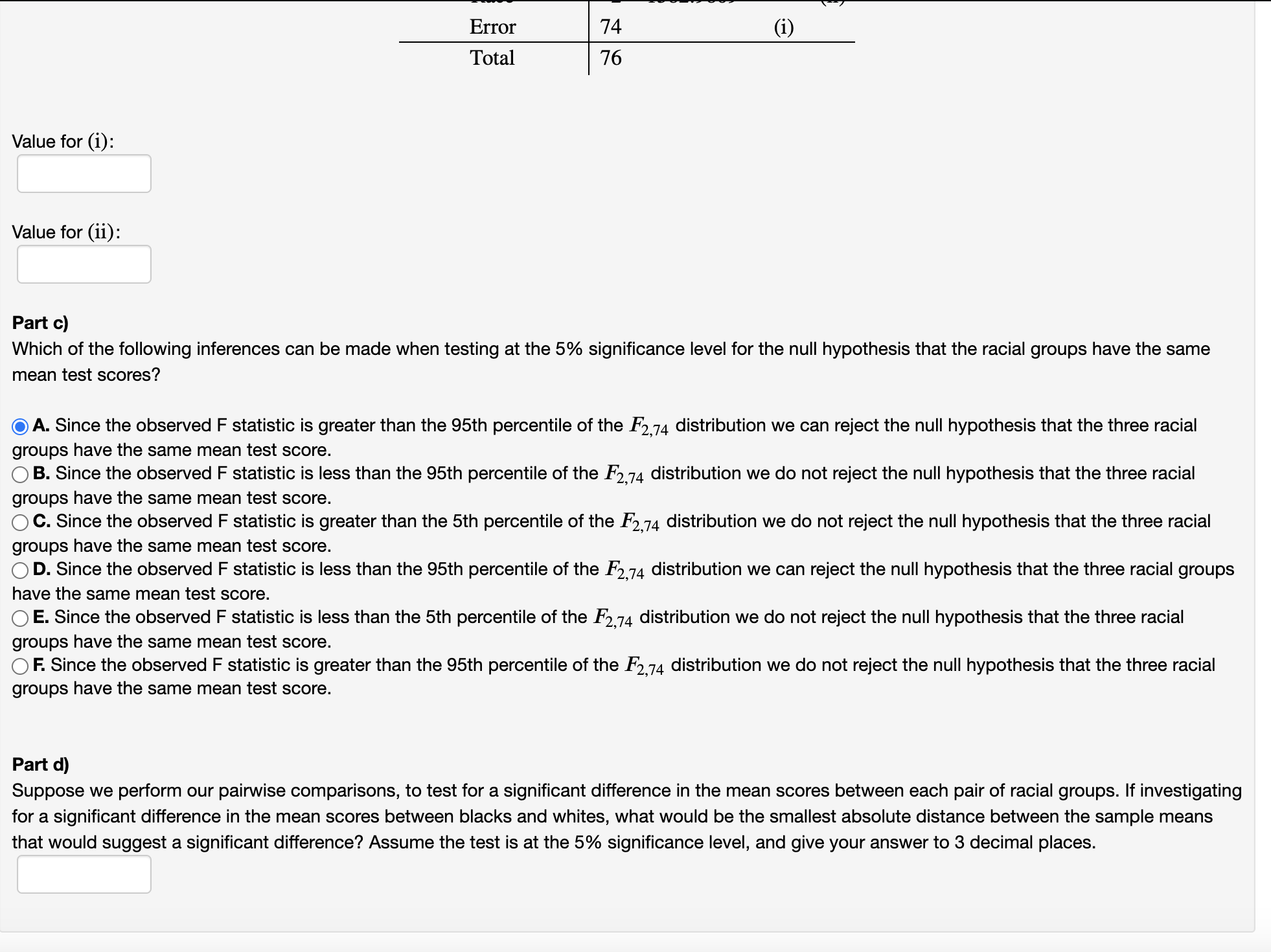Hello, please help!! Thank you !!
Part a) Taking that the underlying assumptions of ANOVA hold and that the approach will be applied, what is the estimate of the common variance of the test scores for the three racial groups? (Give your answer to two decimal places.) Part b) Complete the ANOVA table below, giving requested answers to two decimal places: Source of variation df SS MS F Race 2 1582.9809 (ii) Error 74 (i) Total 76 Value for (i) : Value for (ii) : Part c) Which of the following inferences can be made when testing at the 5% significance level for the null hypothesis that the racial groups have the same mean test scores? O A. Since the observed F statistic is greater than the 95th percentile of the F2,74 distribution we can reject the null hypothesis that the three racial groups have the same mean test score. O B. Since the observed F statistic is less than the 95th percentile of the F2,74 distribution we do not reject the null hypothesis that the three racial groups have the same mean test score. O C. Since the observed F statistic is greater than the 5th percentile of the F2,74 distribution we do not reject the null hypothesis that the three racial groups have the same mean test score. O D. Since the observed F statistic is less than the 95th percentile of the F2,74 distribution we can reject the null hypothesis that the three racial groups have the same mean test score. O E. Since the observed F statistic is less than the 5th percentile of the F2,74 distribution we do not reject the null hypothesis that the three racial groups have the same mean test score.(1 point) The Ricci v. DeStefano case in New Haven, CT (129 S. Ct. 2659, Sup. Court, 2009), involved a claim of "reverse" discrimination. Firefighters in the city took examinations to progress through the ranks. One test was for promotion to lieutenant, and at the time the city had eight such positions to fill. The city's charter required the fire department to appoint from the candidates with the best ten scores on the relevant examination. All the top ten scores were from white applicants. The district declined to certify the exam and did not promote any of the candidates, on the grounds that doing so would fail to promote sufficient visible minority candidates to an existing position. It is of interest to investigate whether there appears to be a difference in the mean scores on the examination for the three identified racial groups: white, black, and Hispanic. Suppose the test score data were as displayed below: Blacks Hispanics Whites Sample size: 19 15 43 Mean: 65.54 62.52 73.11 S.D.: 8.32 5.10 9.34 Hypothetical Lieutenant Exam Scores by Racial Group 8 Lieutenant exam scores 60 O Blacks Hispanics Whites Racial GroupError 74 (1) Total 76 Value for (i): Value for (ii): Part c) Which of the following inferences can be made when testing at the 5% significance level for the null hypothesis that the racial groups have the same mean test scores? Q) A. Since the observed F statistic is greater than the 95th percentile of the F234 distribution we can reject the null hypothesis that the three racial groups have the same mean test score. 0 B. Since the observed F statistic is less than the 95th percentile of the F274 distribution we do not reject the null hypothesis that the three racial groups have the same mean test score. 0 0. Since the observed F statistic is greater than the 5th percentile of the F234 distribution we do not reject the null hypothesis that the three racial groups have the same mean test score. 0 D. Since the observed F statistic is less than the 95th percentile of the F234 distribution we can reject the null hypothesis that the three racial groups have the same mean test score. 0 E. Since the observed F statistic is less than the 5th percentile of the F2974 distribution we do not reject the null hypothesis that the three racial groups have the same mean test score. 0 F. Since the observed F statistic is greater than the 95th percentile of the F234 distribution we do not reject the null hypothesis that the three racial groups have the same mean test score. Part d) Suppose we perform our pairwise comparisons, to test for a significant difference in the mean scores between each pair of racial groups. If investigating for a significant difference in the mean scores between blacks and whites, what would be the smallest absolute distance between the sample means that would suggest a significant difference? Assume the test is at the 5% significance level, and give your answer to 3 decimal places









